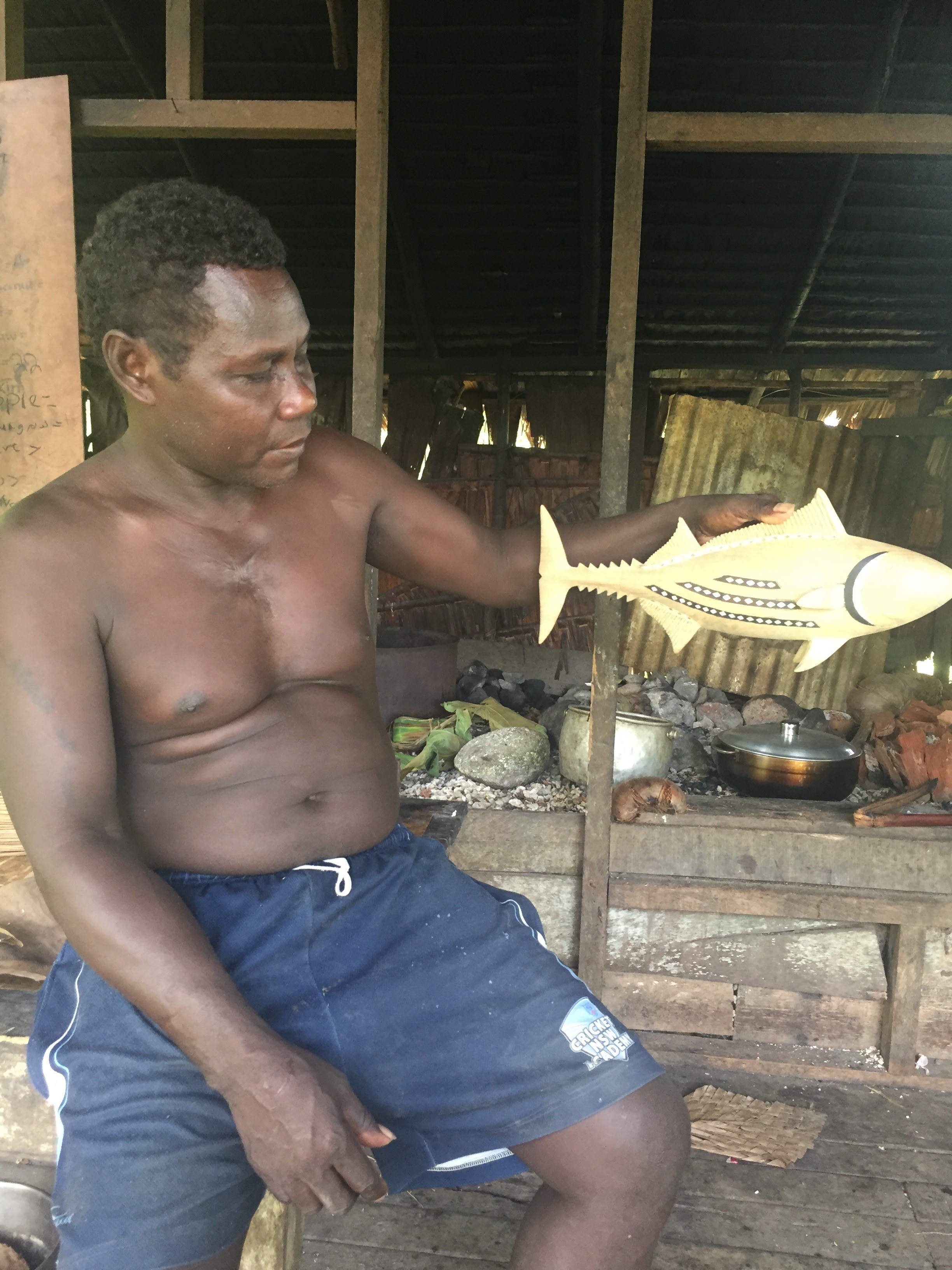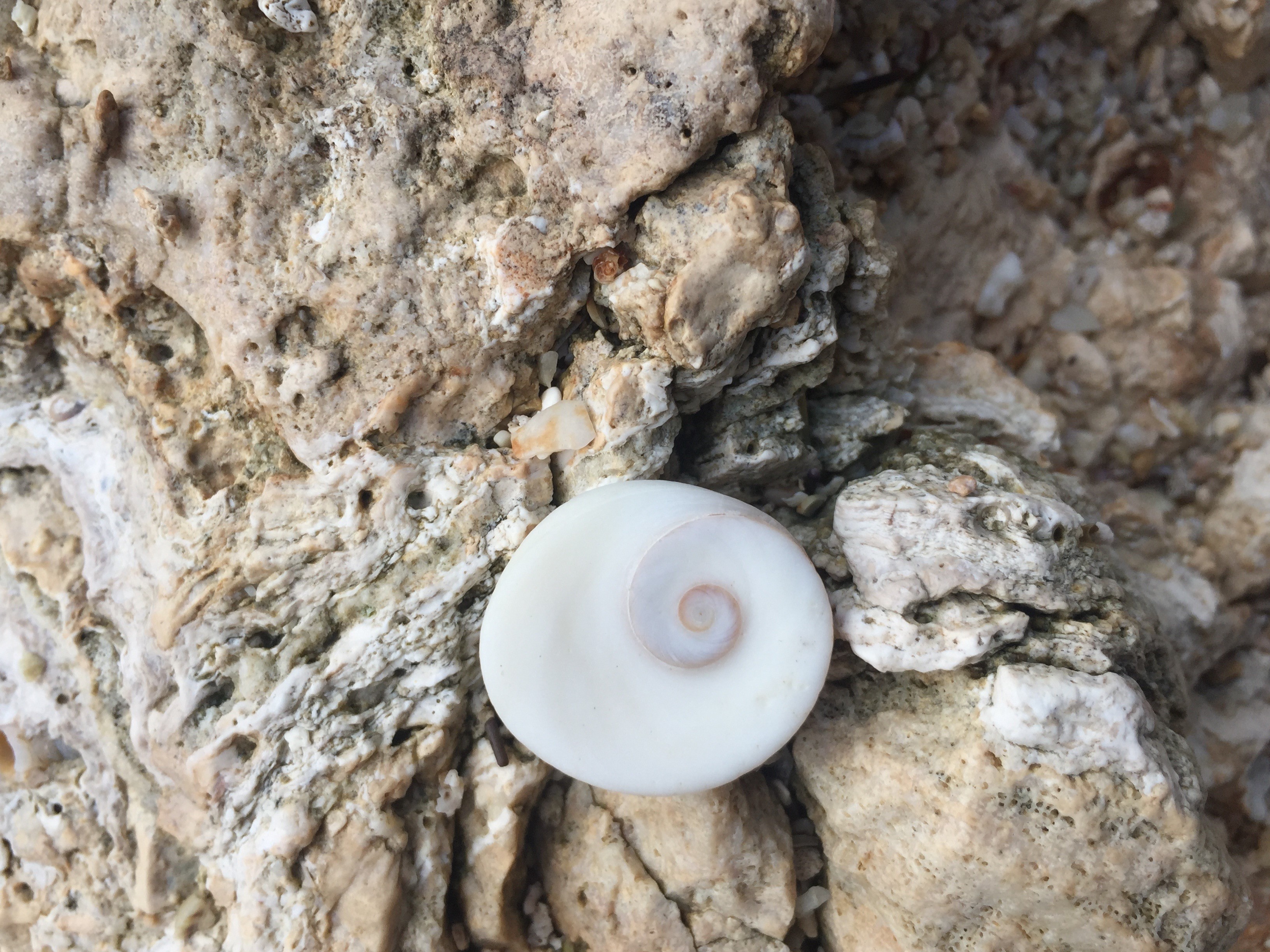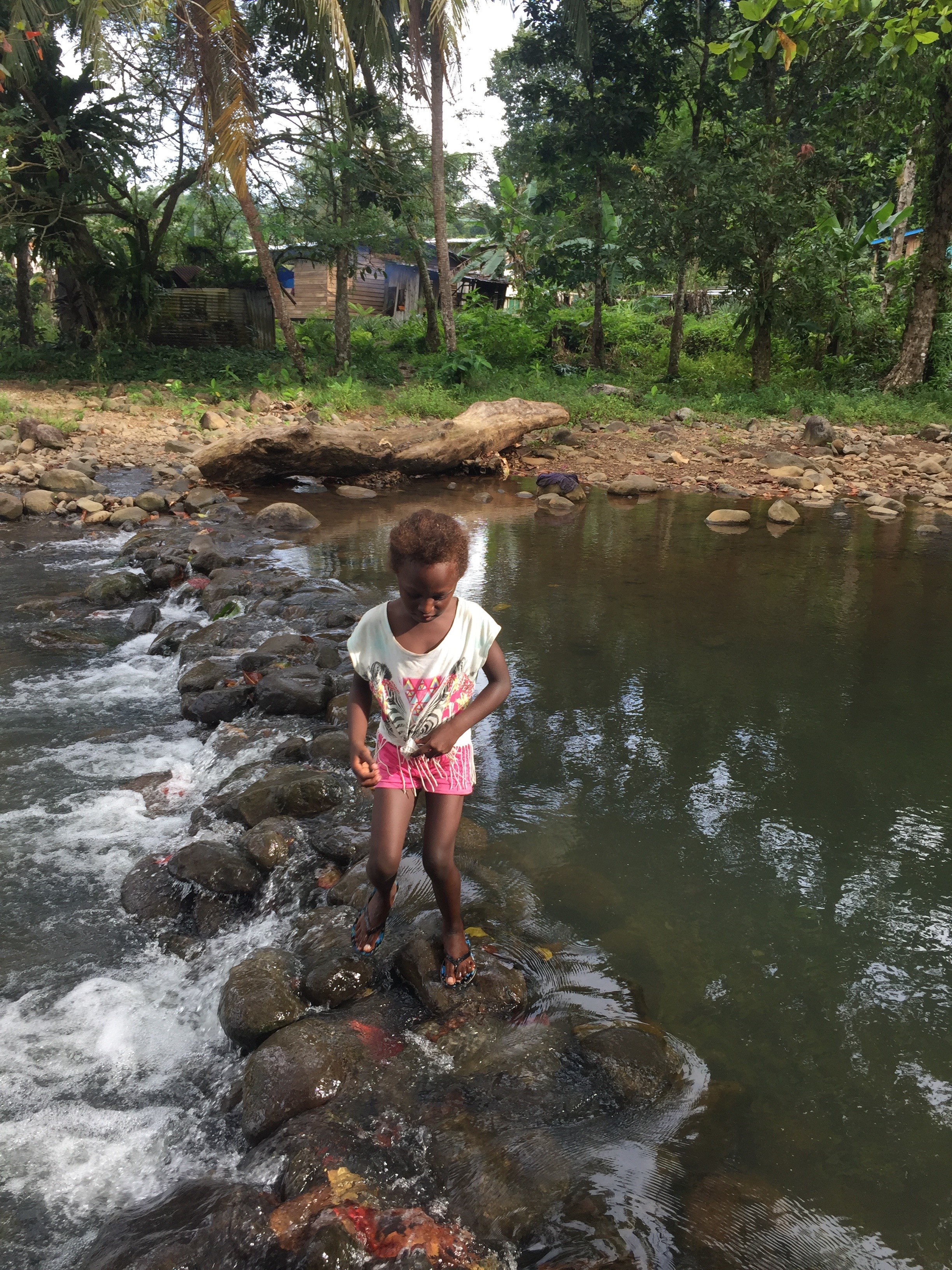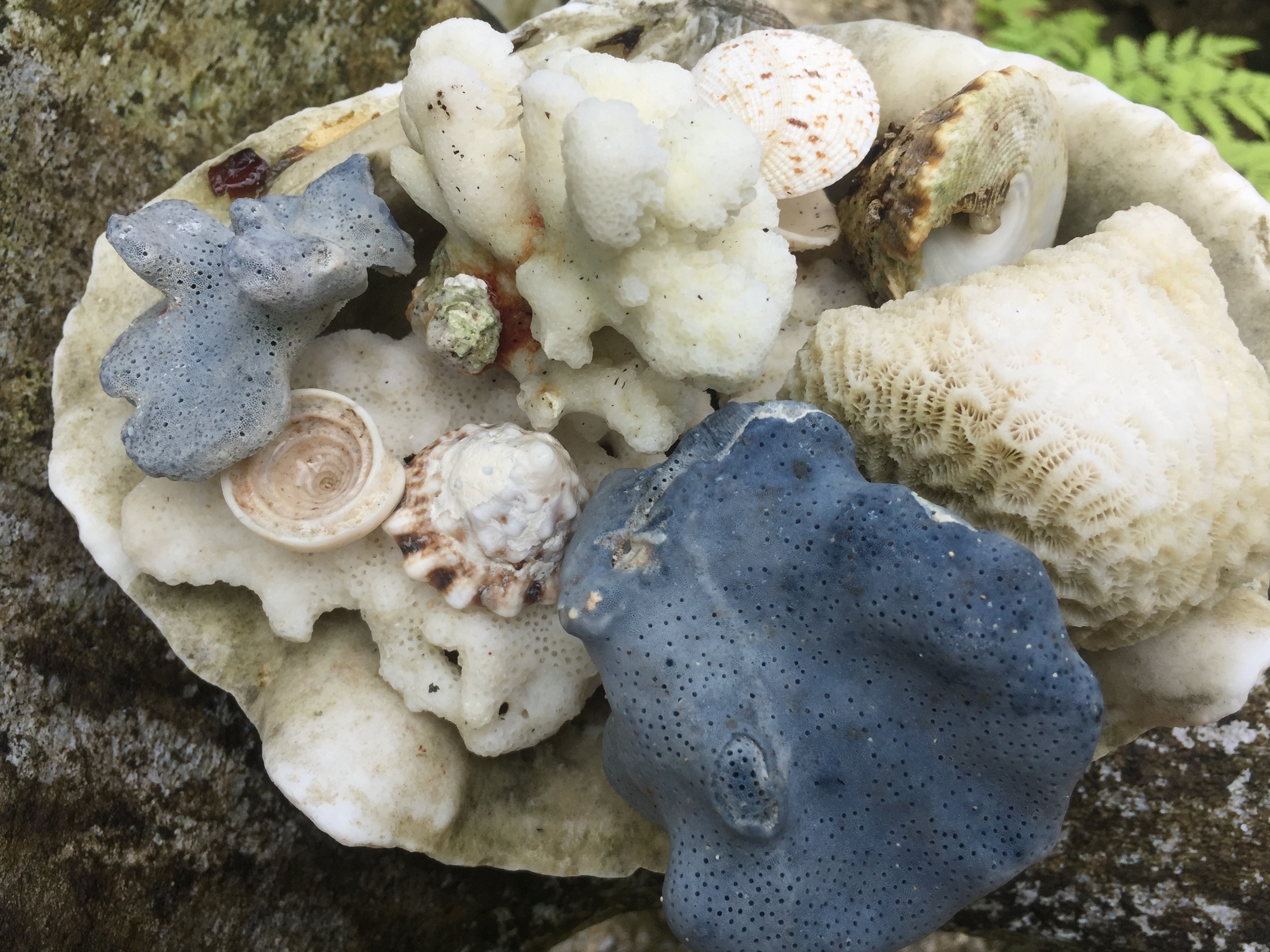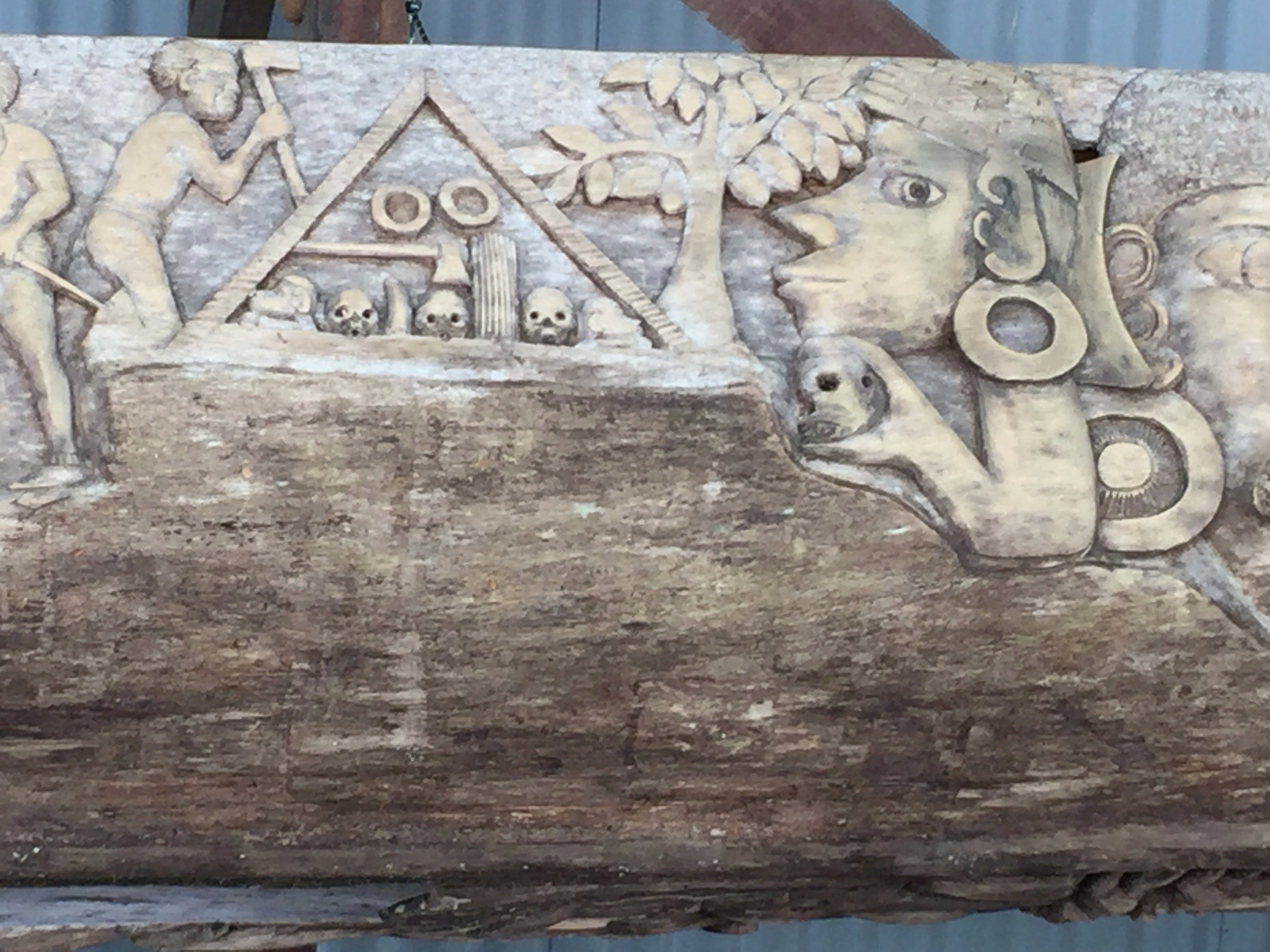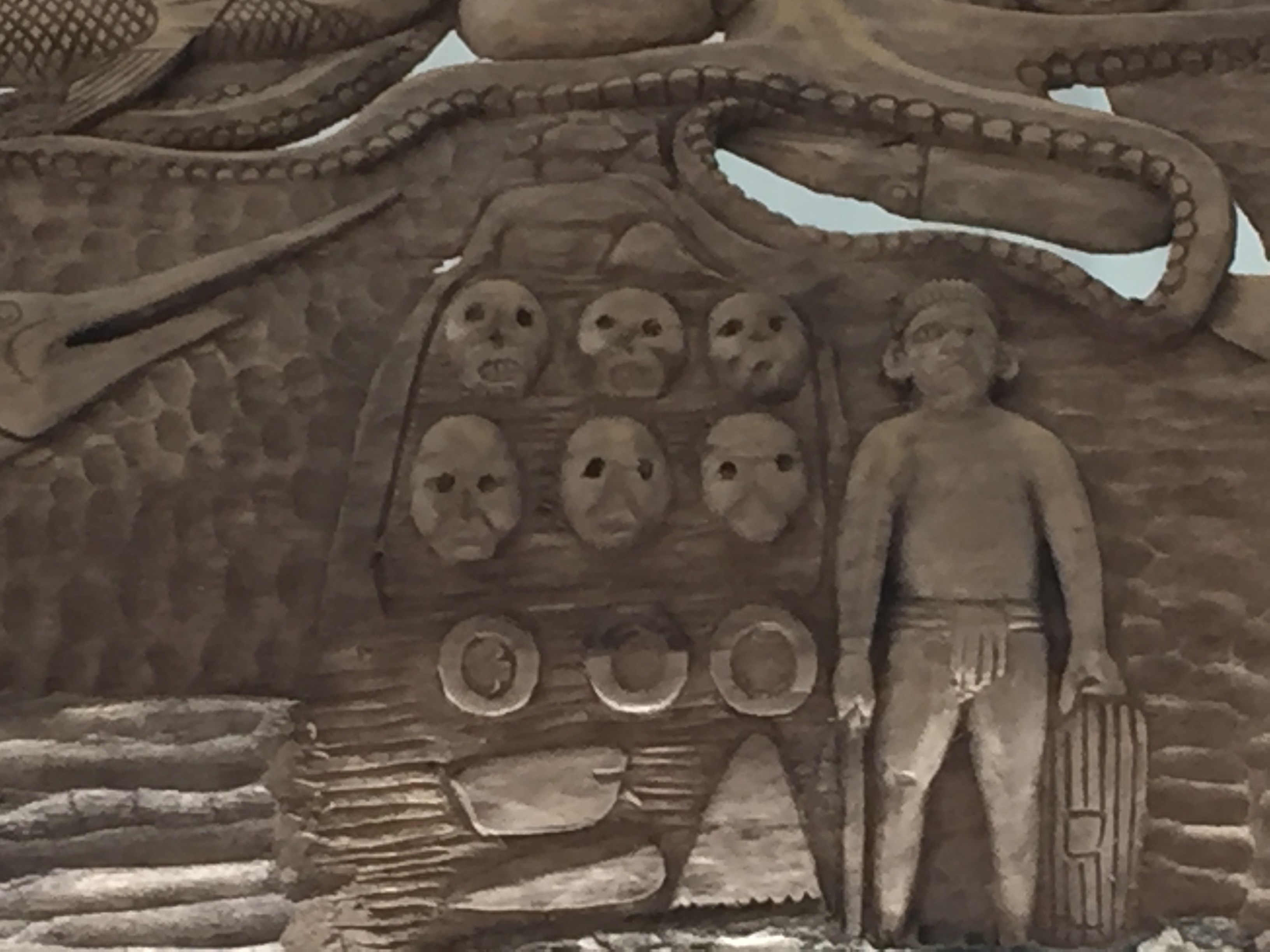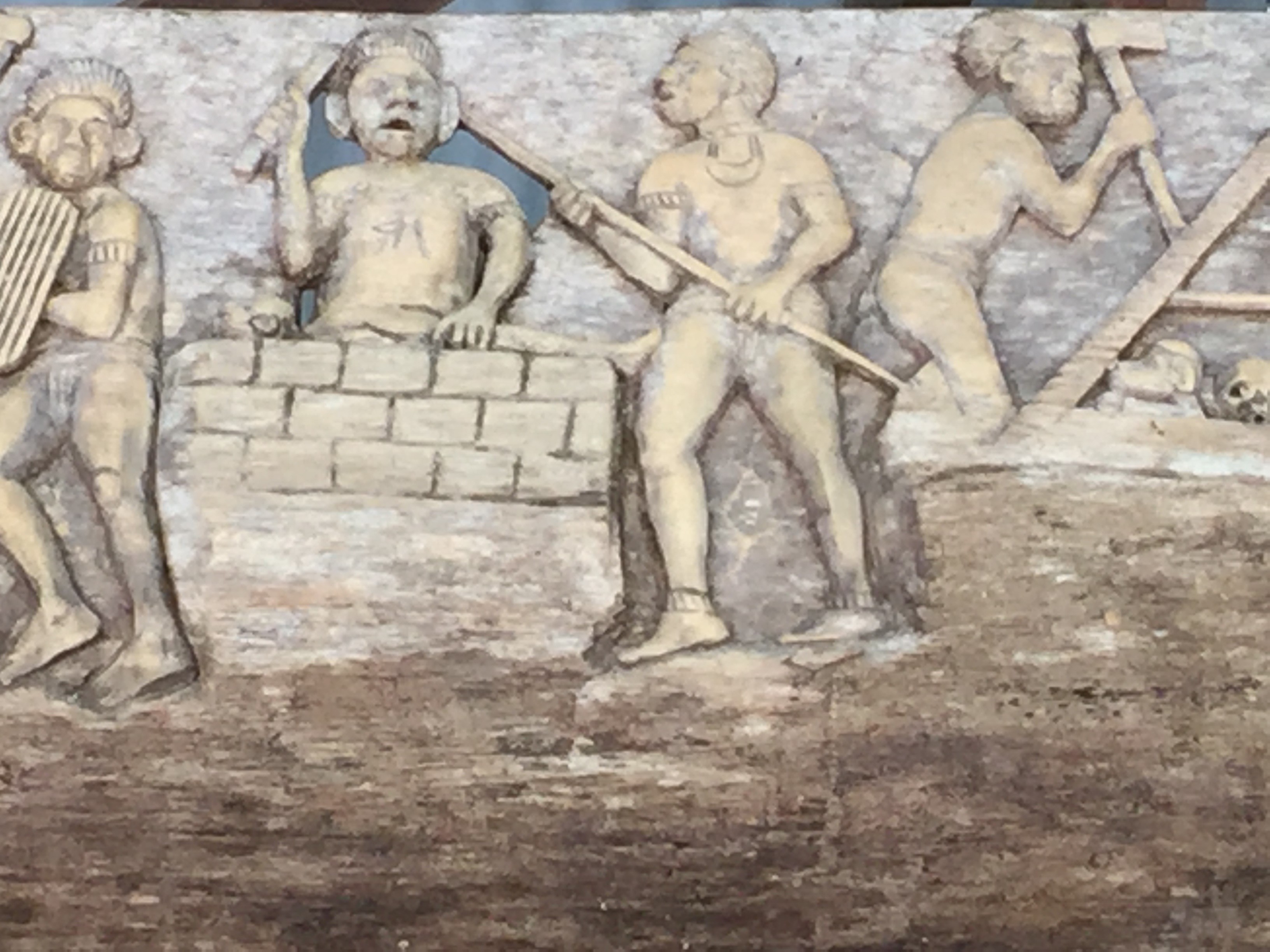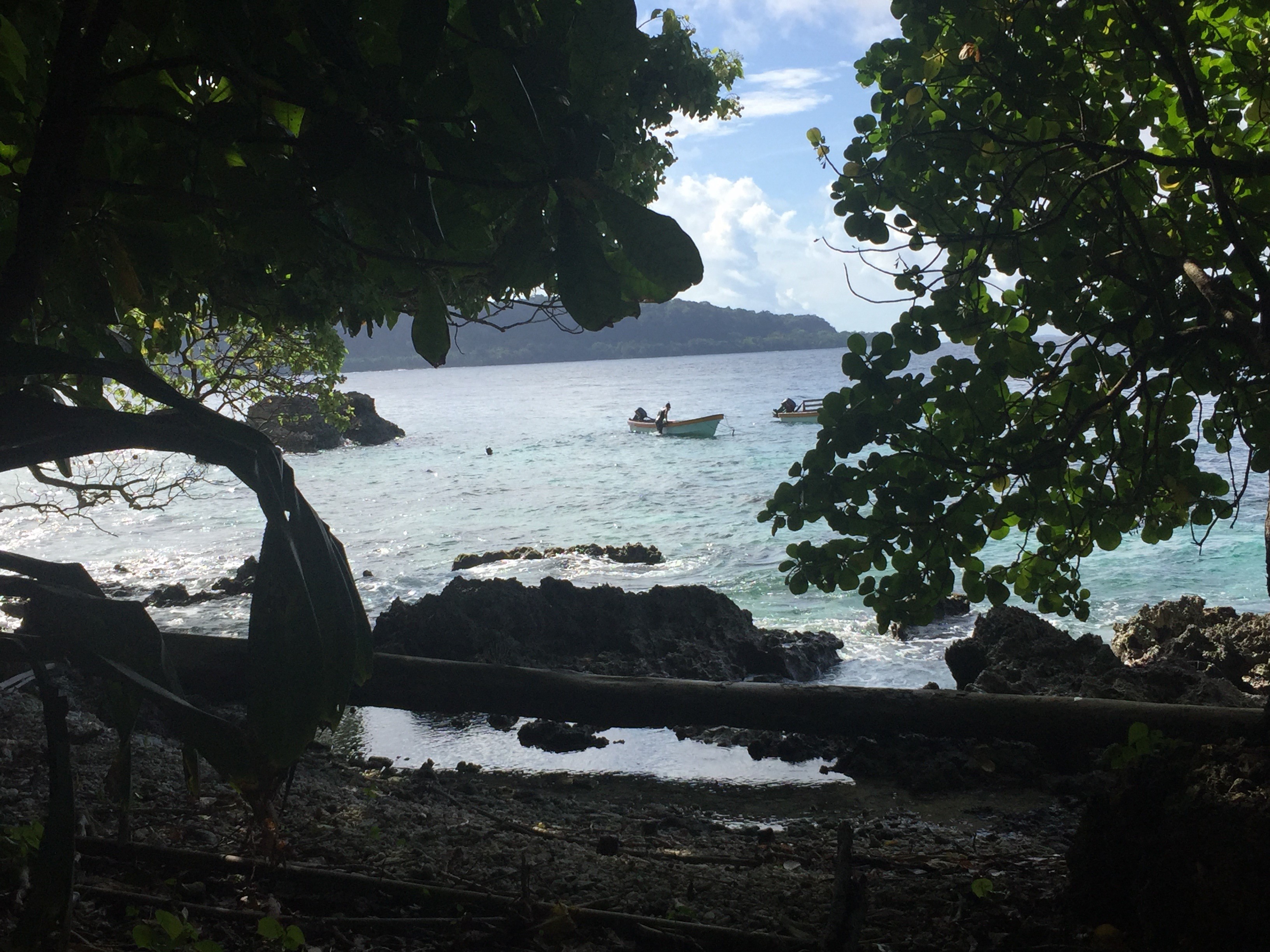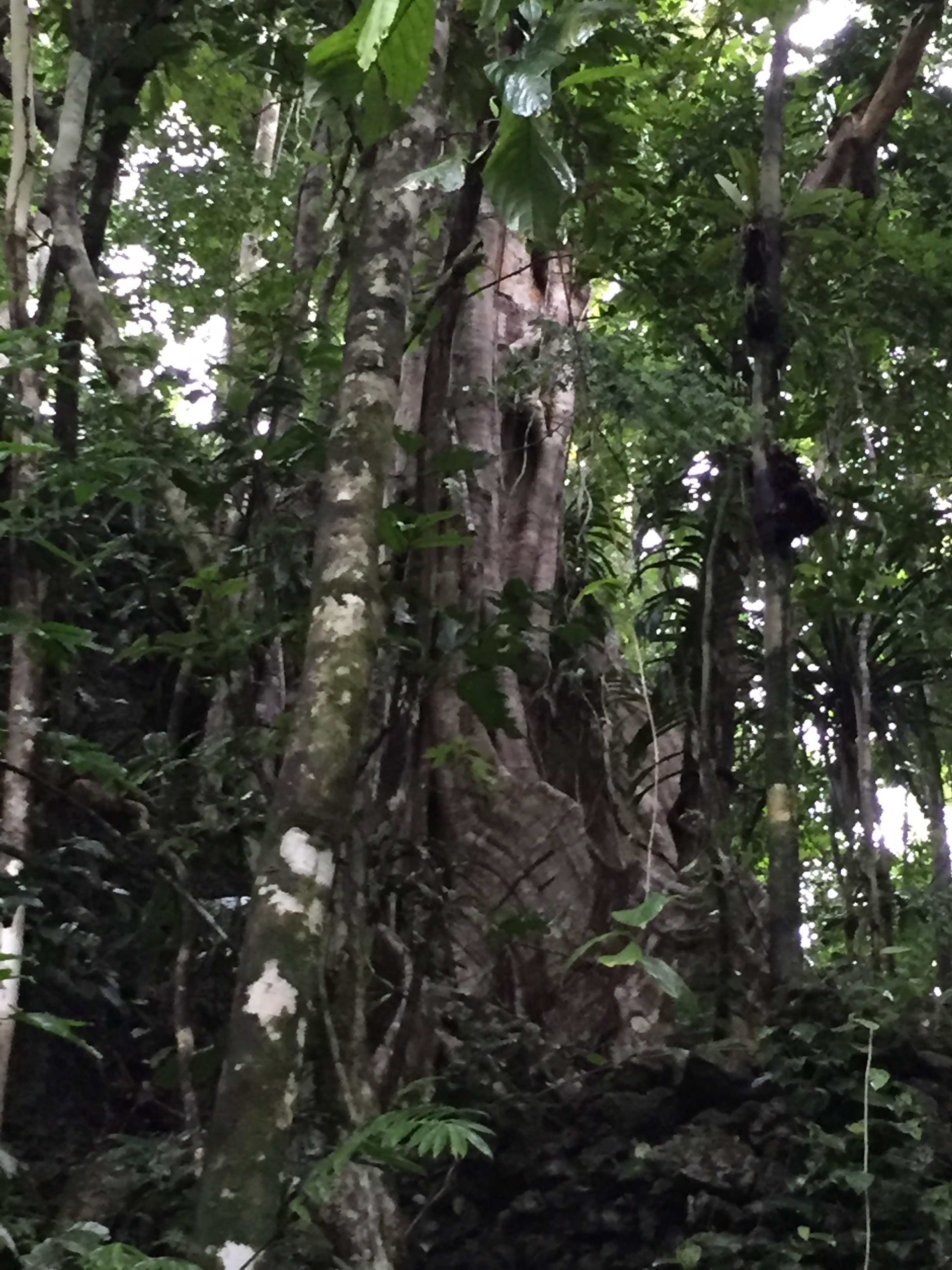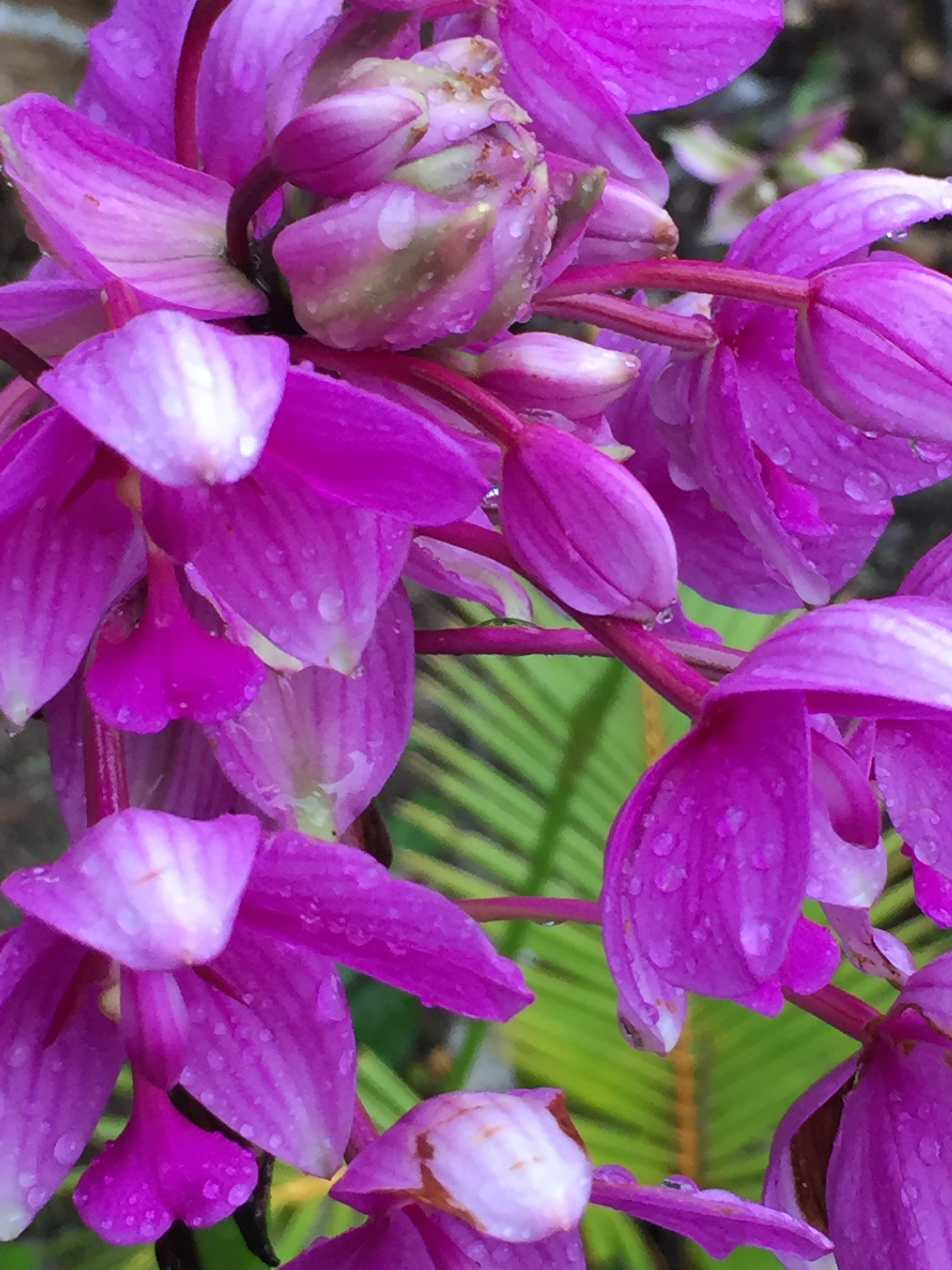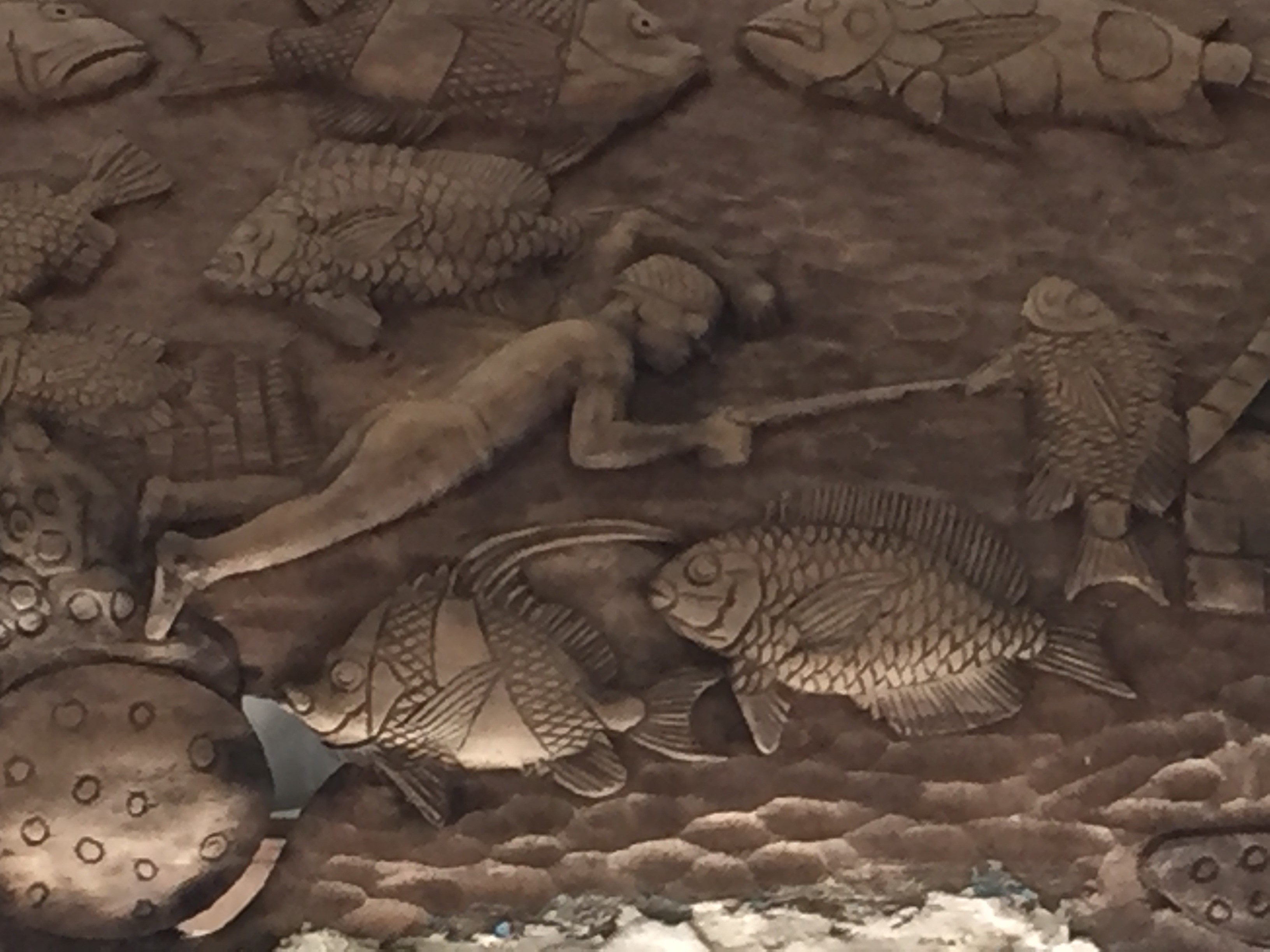Solomon Islands, Marovo Lagoon, Stories
Gura, one of the master carvers on Gatukai Island, is also a storyteller. His full native name is Gura Bula, which means peacemaker. He never went to school. He learned reading from his brother and English from watching television. His English is excellent and his knowledge about the world impressive. He told me the story of his people.
Gura sitting in front of his kitchen house where he also does his carvings
Where do we come from? Many mythological and religious stories all over the world try to answer this question. Now it is science, which looks into this big question of origins. The ancestors of Gura had their own explanation.
A shell called Shiva’s Eye in India
The origin story of Gura’s ancestors goes back to Tettepore, who was born after developing for 8 years in his mother’s womb. He only had 8 strands of hair, which he used for many things. One time, the boat his people were sitting in was sinking. He threw a strand of hair to the nearby island and made a bridge to safety. However, one woman fell into the ocean when walking over the bridge and turned into a dolphin. Ever since, they believe that the dolphins are one of their ancestors. It brings them luck when they see one.
The eel is another animal the natives on Gatukai Island believe to be in a symbiotic relationship. They damned up the river Kavolavata (kavo = river) in order to breed the eels near their village.
The eels live in the deeper part of the river to the right
Until 1914, the people living in Marovo Lagoon were living their traditional way of life and were headhunters. The great great grand father of Gura was the first to become a 7th Day Adventist. Gura explained that the power they previously got from evil now comes from believing in and praying to God. I could see that Gura was radiating power – but the power of kindness. It was incredibly interesting to listen to the stories of how his ancestors lived not more than 100 years ago. Some of the stories he told were carved by one of his brothers on an old warrior canoe.
Driftwood lodge with a warrior canoe hanging from the ceiling
Guru’s great great grand grand father was the chief of his community. As the chief, he had the “Ligomo” power, meaning that he was the commander of his warriors. The Ligomo power was contained in a shell holding several things – including a human tooth.
I collected shells and coral reefs on the beach just enjoying the beauty of these things
Having Ligomo power meant that the chief was able to directly connect with the Spirit. The Spirit told him what to eat, what to do and when to attack other islands. There were many taboos. For example, it was absolutely forbidden for the chief to walk underneath his house or eat crab soup. In doing so, he would have lost his Ligomo power. In order to keep his power, he had to occasionally eat a child.
Nguzunguzu to the right holding a human skull
Human skulls are also depicted in the triangle. The circles above them are traditional shell money.
Another heap of human heads carved on the canoe
The sacrifice of a child was highly ritualized. First, his warriors were asked to bring back a child from their head hunting mission. The child was then kept in the village and treated very well in anticipation of the future sacrifice (a similar story is told in Grimm’s Hansel and Gretel, where the witch was feeding Hansel very good food). However, there were taboos involved too. If this child went underneath the house, then it could not be sacrificed anymore and was supposed to marry a son or daughter of the chief.
When the time was right for the sacrifice, the whole village went to a special island were the ritual killing took place (the child was drugged). The chief ate part of the child in order to keep his power.
Sacrifice of a child
Afterwards, the whole village paddled to another island to have a big feast. It was the same island where we went for snorkeling and a picnic. I did not feel anything of the gruesome past.
The ritual only could be done by warriors. A warrior was a man who had killed at least 30 other warriors from another island and brought back their heads. They had to fight by facing each other and were not allowed to kill women or children. The warriors only could eat food cooked by other warriors. They had to obey many rules in order to keep their powers.
Another way to keep the Ligomo power was to adopt powerful animals. For example, the great great great grand father of Gura adopted the crocodile and the shark. With this act, they became his messengers and alerted him of danger. One time, envious boys served his son, who was believed to also have the Ligomo power, crab soup. A shark rocked the boat of the chief and he knew that there was something wrong going on. After he heard of the incident of the crab soup, he connected with the spirit of the shark again and promised to do what the shark wanted him to do in order to restore his son’s power. However, he never fulfilled his promise – it was only important to connect and promise, but actually not important to really do it.
The village also was attacked by other tribes. They had a place of safety. Gura showed me the steep cliff with only one entrance. A single warrior could defend it.
Place of safety for the villagers
The canoe also had the carving of a native climbing up a coconut tree and another one going fishing with a harpoon – both foods are still in the traditional diet of the natives.

